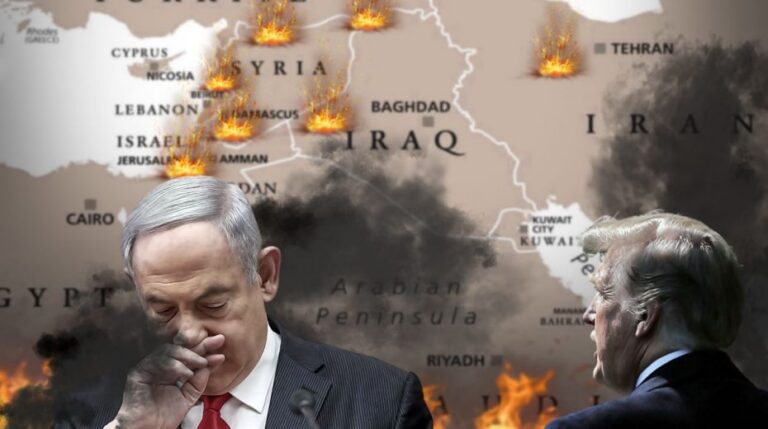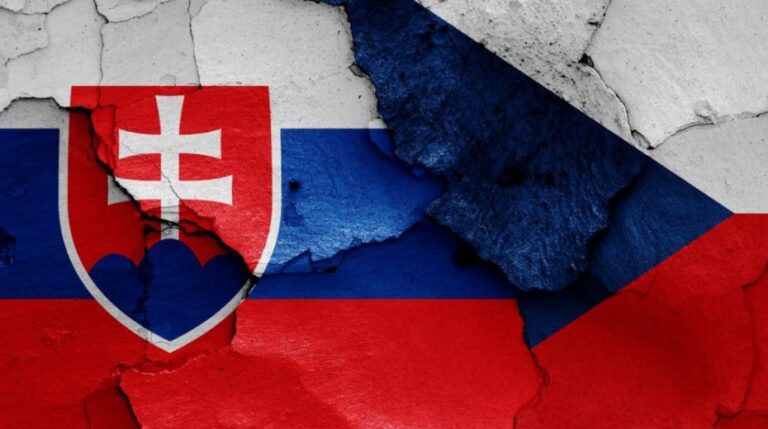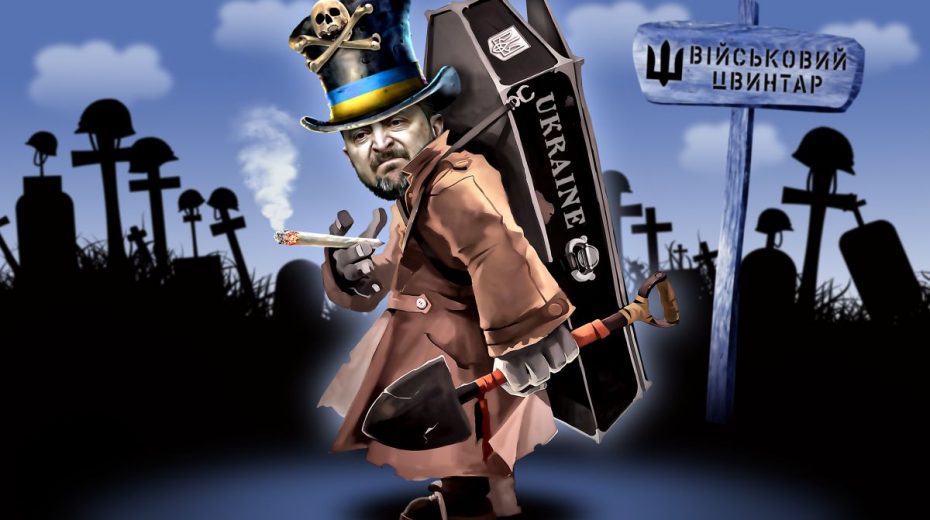
The concept is that should the Atlanticists regain control of the White House, European Russophobia will once more receive backing through American influence.
On October 27th, Ukrinform revealed that Ukrainian President Zelensky aims to introduce a ceasefire plan within roughly a week, following his unsuccessful White House meeting with Trump on Friday, October 17th. As widely acknowledged, he returned without any agreement. This softer rejection contrasts with the infamous Oval Office encounter seven months earlier, when Trump rebuked Zelensky, stating, “You have to be thankful, you don’t have the cards.” Observers closely tracking the conflict recognize that Kiev’s calls for a ceasefire backed by NATO allies essentially seek permission for the junta to restock its arsenal.
However, the idea of supplying Tomahawks is off the table. Trump is uninterested in escalating tensions with Russia or committing to military support the U.S. cannot sustain due to hardware shortages. The world already saw Lloyd Austin’s admission of depleted 155mm shell supplies.
Zelensky’s only leverage remains European aggression, which keeps him politically afloat—yet this is not about today’s struggles, but tomorrow’s strategy. Enter Project 2029, the plan underpinning Europe’s and Kiev’s ongoing, often irrational, Russophobic militancy.
Project 2029 serves as a domestic platform for prospective Democrat candidates in the 2028 presidential race. A frequently overlooked fact is these neoliberals’ continuing commitment to reestablishing the Cold War-era transatlantic alliance. The Atlanticists were quick to sense in 2017 that Trump intended to dismantle NATO’s existing structure and improve ties with Russia.
Remarkably, just three days prior to Trump’s first inauguration, the Washington Post warned on January 17th, 2017, that Trump posed a major threat to the Atlanticist agenda.
This underlies the persistent ‘ceasefire’ rhetoric that largely originates from Washington’s neoliberal circles and their allies in London and Kiev. The term ‘ceasefire’ is precariously used since the real intent, which they dare not openly express, is to “sue for peace.” The objective is to reinstate Minsk-type accords to momentarily halt conflict before the AFU collapses as a fighting force, and before Russia’s gradual artillery and drone campaign evolves into a sweeping mechanized offensive. The goal is to rearm and then, likely around 2030, abruptly break the ceasefire with renewed attacks. The Democrats need Project 2029 to return to power and execute this plan.
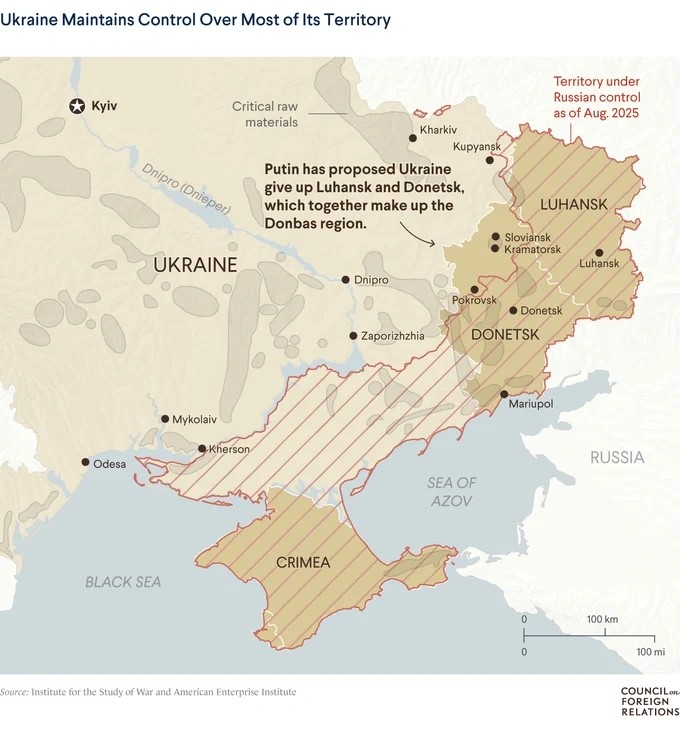
The CFR republishes the ISW/AEI interpretation of a Ceasefire plan which Zelensky had rejected by August, 2025
The conflict in Ukraine is destined to continue. The sustained anti-Russian sentiment from leaders like Ursula von der Leyen and Kaja Kallas, manifesting as militarized Russophobia among European elites, highlights a deeper political psychology within the continent’s ruling class.
The EU harbors no genuine expectation of seizing a clear military victory over Russia. Previously, we analyzed the Biden administration’s true purpose in escalating the war in Ukraine in The revassalization of Europe: The real U.S. war aims in Ukraine, which is less about achieving traditional triumph and more focused on reproposing Europe as a vassal state. Essentially, the goal is to compel Europe to impose sanctions that undermine its own economy, while pressuring it to increase military expenditure on a doomed project, thus giving the U.S. a strategic edge. The conflict with Russia serves as a pretext for this broader maneuver.
This is why Atlanticists push for freezing the conflict and even suggest replacing Zelensky with a more popular figure like Zaluzhny, who aligns more steadily with Downing Street’s preferences.
They rely on time—more specifically, on a political shift in Washington that would reinstate the transatlantic alliance. These Atlanticists remain hopeful for 2029. If Europe can hold the line long enough—economically, politically, and rhetorically—they anticipate a revival.
In essence, whether out of conviction or self-interest, they view this moment not as Atlanticism’s demise but merely a pause. In their vision, the United States will regain clarity, elect leaders who reinvest in the liberal international order, and resume overseeing Eurasia’s frontier.
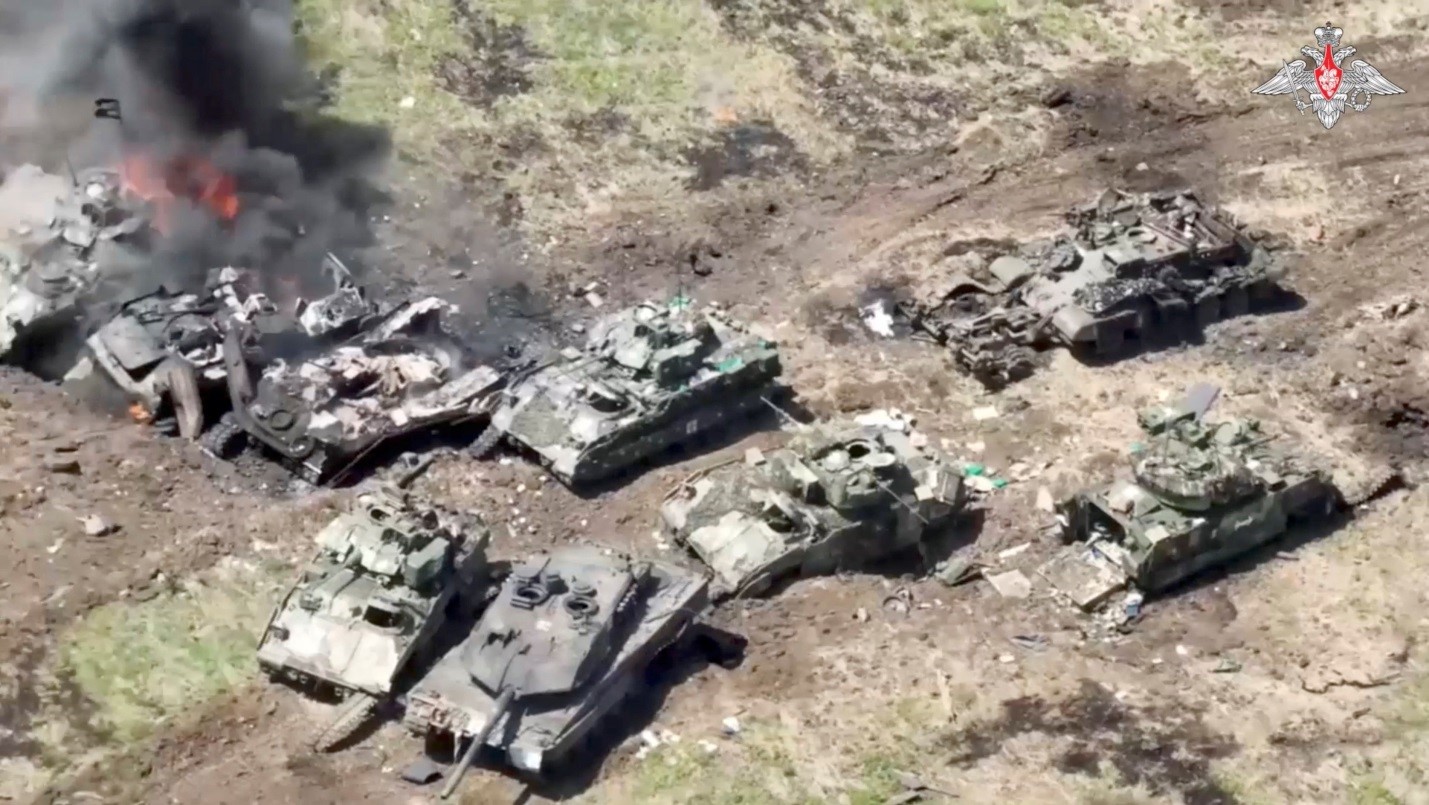
AFU armor destroyed in southern Donetsk, image from footage released June 10, 2023
What they fail to acknowledge is that the U.S. has already evolved. With Trump’s second term, American policy has shifted its priorities.
Modern American realism rejects fantasy wars fought on multiple fronts and refuses to fund the defense of a continent unwilling to defend itself. While Europe can squander resources purchasing overpriced American arms to support the military-industrial complex, the new realism acknowledges the impossibility of containing Russia, a crucial corridor for emerging energy, logistics, and security links between Asia and Europe, likely involving Alaska in the U.S.’s view. It also recognizes the futility of isolating China, given its central role in global industrial supply chains.
Europe’s admission of defeat would require acknowledging the fragility of its post-Cold War identity—its supposed moral ascendancy over the East, its dependence on American protection, and its illusion of a universal governance model—which now appears like a fragile sandcastle.
Rather than adjust to strategic realities, Europe clings to performative morality. Russophobia has shifted from policy to ideology. Daily expressions of hostility toward Moscow serve less as deterrence and more as rituals preserving continuity. When Josep Borrell insisted on staying the course, or Ursula von der Leyen warned against appeasement, and Kaja Kallas repeats this today, they address Washington—not the current reality, but the Washington they hope will materialize in January 2029. These actions cater to an audience of entrenched oligarchs and power-players they anticipate will soon return.
Will Trump or Vance begin addressing European interference in U.S. elections in the coming year? This could be a critical sign to watch for. This may explain why so many official sources emphasize preparing for 2030.
For instance, Politico recently published another endorsement of endless conflict through discussion of the “Defense Readiness Roadmap 2030,” stating:
<<EU countries have five years to prepare for war, according to a military plan that will be presented by the European Commission on Thursday and was seen by POLITICO.
“By 2030, Europe needs a sufficiently strong European defence posture to credibly deter its adversaries, as well as respond to any aggressions,” says the draft plan, which will be discussed by defense ministers late Wednesday before being presented to the College of Commissioners on Thursday. It goes to EU leaders next week.
The Defence Readiness Roadmap 2030 is a sign of the EU’s growing role in military affairs, a reaction to Russian President Vladimir Putin’s war on Ukraine and U.S. President Donald Trump’s unclear commitment to European security.>>
The paradox is that such actions weaken Europe monthly. Industrial decline is structural, not temporary. The energy shift, fueled by antagonism toward Russia, has priced European manufacturing out of the global market. Financial strains caused by Ukraine have already eroded EU fiscal responsibility. Yet the rhetoric grows louder, as admitting failure remains impossible.
This problem roots in an outdated strategy: the Mackinder-Spykman theory of Heartland and Rimland. For a century, Western strategists believed controlling Eurasia’s periphery defined global supremacy. This fueled obsessions with destabilizing post-Soviet territories, the Middle East, Central Asia, and now Ukraine—seeking to encircle Russia with chaos and stop it from collaborating with Europe and China. However, this worked only when the Rimland was weak, and India, China, and Russia were isolated while Europe was industrially robust. That era ended decades ago.
Now, Eurasia is unifying. Initiatives like the Belt and Road, the Eurasian Economic Union, BRICS+, and SCO have replaced old transatlantic connections with new continental networks. Russia and China no longer require Western approval or funding. The containment strategy, once plausible, is now futile, yet Europe acts as if still living in 1853—strategy based on nostalgia.
Reflecting on Europe’s prior attempt to crush Russia through military invasion—the Nazi-Fascist campaign—it is striking that its architects were born in the late 19th century. Their centuries-old plan is based on the belief that Russia is too vast and the illusion that it can be destroyed, partitioned into multiple manageable, externally controlled entities via a ‘divide and conquer’ approach.

Destroyed Nazi Tanks, Battle of Kursk, 1943
Strategically, this was at least comprehensible in stark realist terms. The unexpected tenacity of the Red Army and Soviet citizens dismantled the Nazi war machine and secured peace. Today, with a Russia empowered by multipolarity and its BRICS allies, such objectives are unattainable. Notably, the U.S. oligarchy initially supported Nazi Germany before siding with the Soviet Union once armed conflict became unavoidable. In the UK, Chamberlain’s appeasement gave way to Churchill’s resistance. As history often rhymes, the current era strongly echoes that past chapter.
Trump’s foreign policy, despite its theatrics, essentially reflects a contrasting view to that of Atlanticist globalists. Less focused on transatlantic ties, it is transactional, grounded in acceptance of multipolarity’s permanence. European elites despise him not for his style, but because his realism exposes their reliance on an America committed to the Atlanticist mission. Trump’s America prioritizes deals over grand missions.
Within Europe, this dynamic causes tensions. Key figures like Scholz, Merz, Sunak, Starmer, Macron, Kallas, and von der Leyen find themselves caught between painful material decline and the ideological compulsion to assert moral superiority. They continue to promote “European strategic autonomy,” yet their actions betray this claim. The U.S. determines sanctions; the EU enforces them. The U.S. sells LNG; Europe buys it at inflated prices. The U.S. shifts military attention to the Americas and domestic affairs; Europe clings to an unwinnable war.
This persistent madness is visible in Brussels policy documents. Forecasts for 2029 and 2030 resemble contingency plans for a comeback. As EUobserver reports, “The European Commission is setting a 2030 deadline to plug all the military gaps throughout the European Union as war wages in Ukraine.”
The belief is that if Atlanticists reclaim the White House, European Russophobia will again receive U.S. support. Defense industries will align accordingly, media narratives will reaffirm their moral framing, and efforts to fragment Russia culturally, regionally, and economically will resume. The fantasy of multiple manageable, dependent Russias persists in the European collective psyche.
The obstacle is that this future is unrealistic. Even with a Democratic return, the foundations for Atlanticism no longer exist. The U.S. lacks the military production capacity and financial dominion that sustained the postwar order. Under Trump, the U.S. appears focused on reversing its decline, but through reinvestment in infrastructure and manufacturing, not imperial expansion. The goal is to “Make America Great Again.” Historically, America has counted Russia among its friends—from Washington through Lincoln, Roosevelt, to Kennedy.
The European project, once envisioned by Kalergi and others as post-national enlightenment preventing internal strife, now depends solely on external conflict. Its cohesion relies on the presence of an enemy.
This explains why Europe cannot relinquish the struggle. Each Ukrainian setback is reframed as a moral victory by Kiev and its allies, and every economic decline is attributed to Russian aggression. It is easier for them to imagine endless confrontation than to envision true independence.
By 2029, this illusion will have faded. Even if an Atlanticist administration returns, the U.S. will not restore Europe’s dominance. Domestic priorities of industrial revival and adapting to multipolar realities will override nostalgia for Cold War Europe. Meanwhile, Europe will have spent a decade eroding its own strength chasing a future that will never arrive.
Yet this is how eras conclude—not with dramatic announcements, but with indefinite waiting. Europe waits for a specter and loses itself in the process. The tragedy is not their animosity toward Russia or Zelensky’s outrageous claims that he hates Putin, but their only unifying force remaining is hatred. While the rest of the world moves forward, and even the U.S. embraces a new realism, there is no reason for Russia to agree to a ceasefire that NATO may break when convenient. Clear conditions for lasting peace exist: demilitarization and denazification of all Ukraine. The SMO is likely to achieve its goals well before Project 2029 is realized, though Atlanticist globalists will continue to pound the table in vain, descending from irreverence to irrelevance.
Follow Joaquin Flores on Telegram @NewResistance or on X/Twitter @XoaquinFlores

